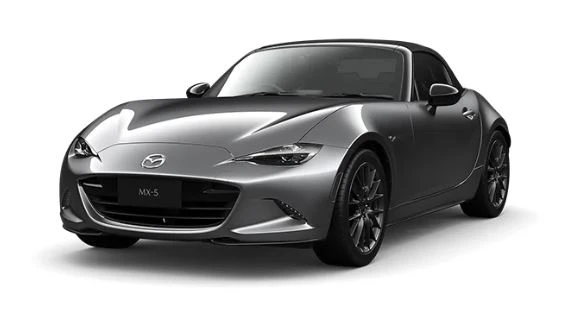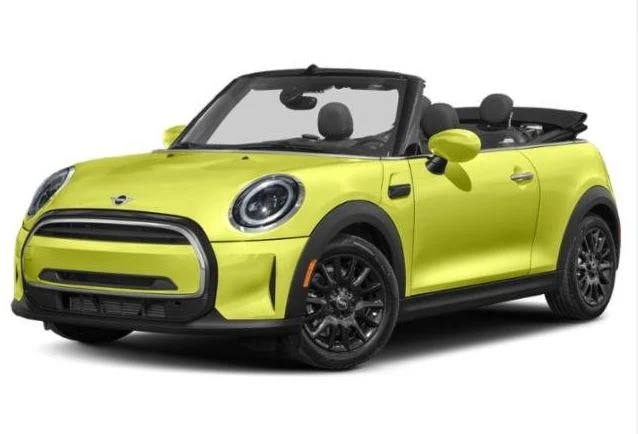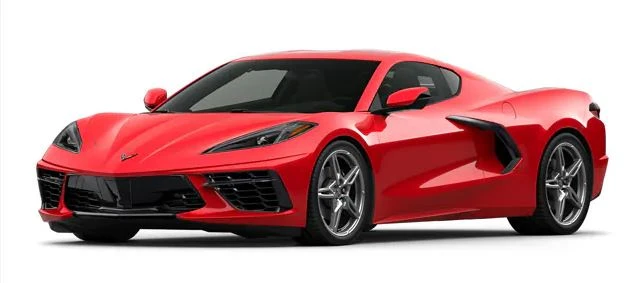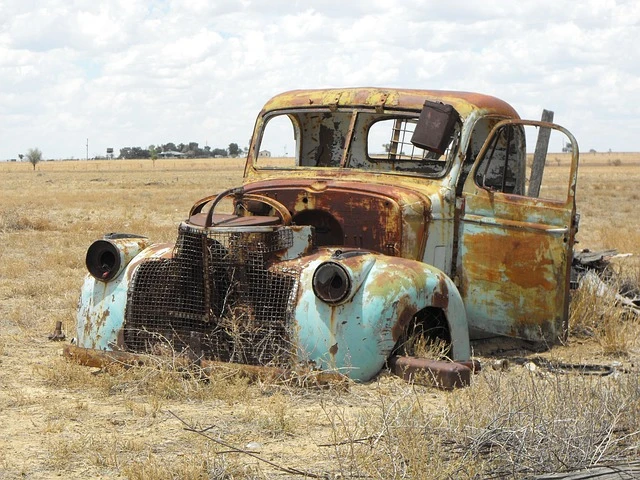Makes and Models
The Fastest Wedge Of Orange In The Galaxy: The Bond Bug

It’s groovy. It’s bright orange. It’s a small car that aimed to capture the younger section of the automotive market that came out during a fuel crisis. It’s the Bond Bug. What’s more, it’s decidedly weird.
The Bond Bug isn’t like any other car found on the roads, and I very much doubt if you’ll see one on the roads of Australia, as only a few thousand were produced during its production run, which lasted from 1970 to 1974 (yes, this car is older than I am). Although the engine is fairly standard – a nice little 700 cc water-cooled inline four engine – it’s the styling that really turned heads and is still turning them. It wasn’t just the fact that the car had three wheels (which one motoring enthusiast described was either one wheel too many or one wheel too few). It also had a futuristic wedge shaped shape with a very space-age lift-up hood as well as two doors and pop-up lights. You could call it a two-door hatchfront instead of a hatchback. It seated two people on its black seats (bright orange and black – you could hardly get something more seventies than that!). It did have a boot that was able to get a small amount of luggage, such as a guitar, but that was about it. The bodywork was made from fibreglass, meaning that the vehicle was light, allowing for better fuel economy (but probably not safety!).
The looks were the brainchild of Tom Karen, a designer for the Ogle company who, among other things, designed the Raleigh Chopper bicycle, a very cool-looking bike that I vaguely remember the cool kids having when I was at primary school (if they didn’t have BMX bikes, that is). The Raleigh Chopper made a brief comeback this year, possibly to commemorate the death of Tom Karen in January 2023.
The Bond Bug was produced by Reliant. Reliant also produced another three-wheeled car, namely the Robin, which is best known as the three-wheeled car that shows up in the Mr Bean skits as the adversary of Mr Bean’s trusty little Mini. This (meaning the Robin, not the Mini) was also designed by Tom Karen.
In terms of performance, the Bond Bug wasn’t quite a supercar, shall we say? The 700ES variant boasted 23 kW of power when the curve peaked at 5000 rpm, and had 52 Nm of torque at the same number of revs. If you think that it could barely overtake a fairly speedy snail or a leisurely cyclist, the Bond Bug was capable of a top speed of 121 km/h and did the 0–100 km/h sprint (?) in 19.7 seconds. Needless to say, it had a rear wheel drive. The handling also left something to be desired.
If you think that the Bond Bug looks like something out of a sci-fi movie, you are absolutely right. In fact, Tom Karen worked with none other than George Lucas and used the chassis from a Bond Bug to create the Landspeeder that Luke Skywalker drives in the early scenes of Star Wars Episode IV: A New Hope (the anti-grav effect is done with mirrors).
Cute and Crazy Convertibles

Temperatures are heating up now, and with the excitement of warm days and summer sun ahead of us, what better way to get around Australia’s best roads than in an open top car? This year has some exciting convertibles you can buy new. But if you can’t quite afford that pricey new Porsche Boxter, then there are always some of those classic rides out there; rides like a legendary Mazda MX-5, BMW 3 Series Cabriolet or even a Volkswagen EOS. If a classic car doesn’t float your boat, then let’s take a look at the new models on offer that deliver real excitement and the pleasures of wind in the hair and sun on the back.
There are two convertibles that are going to get you on the move with the top down that aren’t costing big money. Here they are:
Mazda MX-5

Yes, they are still making them! The latest generation Mazda MX-5 is still as delightful to drive as the very first model that rolled out of the factory in Japan. That cheeky look, sweet little engine, and perfectly balanced handling make the Mazda MX-5 very hard to walk past. And if those attributes don’t clinch the deal for you, then the price will make it ten times harder. Mazda is selling the 2023 MX-5 Convertible for anywhere between $42 and $54k depending on the model of your choice (there are six). Sprightly performance doesn’t have to be thirsty, and with the 2.0-litre engine developing 135 kW of power and 205 Nm of torque, the small Mazda MX-5 is a sparkling car to drive. You have the option of a six-speed manual or auto transmission, and any MX-5 comes with autonomous emergency braking, blind-spot monitoring, rear cross-traffic alert and traffic sign recognition.
MINI Convertible

No less than ten MINI Convertibles models can be had from $49–78k. Two robust engine units power the little open-top Mini: these are the 1.5 Turbo and 2.0 Turbo petrol engines. Of course, they come in various performance guises, the most potent being the 170 kW John Cooper Works Minis. Again, this is another Convertible with lovable looks, and the thing about owning a Mini is that you can have your Mini with as many of the options as you like in a way that suits your tastes. The chances are you will be able to make your new MINI Convertible uniquely your own and different from any other, depending on how large your wallet is, of course!
If money isn’t an issue, then there are currently another 20-odd more convertibles for you to choose from. The most insane ones would have to be the Lamborghini Huracan, McLaren 750S, the Aston Martin Vantage, or the Ferrari F8 Spyder and Ferrari 812 GTS. But there are also nice BMWs, Audis and Jags to be had, and even a Lexus. So do go and check them out, as this small list isn’t the complete deal.
But do you really want to know my favourite?
At around $200k it isn’t the cheapest nor is it the most expensive by a long chalk. However, the 6.2-litre petrol 2023 Chevrolet Corvette Stingray with its glorious looks and scintillating drive wins me over hands down. The V8 motor sounds epic when opened up, and with 369 kW and 637 Nm put through an 8-speed automatic gearbox to the LSD RWD set-up with launch control, this is the car dreams are made of. The car’s claimed top speed is 310 km/h, and a 0–100 km/h sprint is ticked off in around 3 seconds.

Wind in the hair motoring! Ain’t it the best!
Do City Cars Still Have a Future?
Australians have long had a love affair with SUVs, with most of us only too keen to head into the outdoors, particularly in these times where we can’t travel abroad. However, the SUV format hasn’t only just caught wind in Australia. In fact, it’s a global phenomenon that has been taking place in numerous locations, most notably in China and the US.
The SUV format has become so dominant down under, it is consistently making up around half of all new car sales each and every month. Passenger vehicles have all but fallen out of favour, with light commercial vehicles outranking them on a consistent basis. While the sedan is showing little sign of gaining traction, there is one segment that is faring even worse – the city car format.
As more and more manufacturers ditch the format, is it a dying breed?

Design and practicality take over
Of course, there are traditional SUVs that have drawn popularity for obvious reasons, but an emerging area in the car market has been new formats like crossovers and liftbacks, which have shaken up the design of cars as we knew them.
Offering levels of practicality and space that bring into question the versatility of the humble city car, these formats have taken off. Then you still have the traditional hatchback as well, which whilst on the slide, still has its niche position in the market.
With the trend clearly in place seeing more compact SUVs, crossovers and liftbacks developed in place of the city car, it’s hard to see this being overturned.
Furthermore, as urban sprawl takes us to destinations living further away from the city, Australians are more concerned with bigger cars that take care of all their needs. This contrasts with the likes of European cities where a compact car is important for smaller commutes in those tight and narrow laneways.
Locally, the humble city car hasn’t found traction among inner-city dwellers either, with an increasing number of young Aussies ditching car ownership altogether, instead opting for ridesharing services or peer-to-peer car rental services that certainly won’t be sufficient to ensure the survival of the city car format.
As each brand’s SUV line-up expands by the year, the writing is on the wall – city cars look likely to eventually fall by the wayside, even if that does become a drawn out affair…hopefully, it’s not before a select few manage to put up a fight and remind us what a shame it will be when they disappear for good.
So You Want To Be An Uber Driver?
Quite a few of you may have considered getting a few extra bucks out of your car by signing up as a driver for the rideshare scheme Uber or one of the similar schemes, such as Ola. But is your car suitable for this? What’s more, if you are seriously considering the possibility, then what do you need to know when you go to buy a new car?
First of all, let’s get the disclaimers out of the way. I’m not affiliated with Uber, have never been an Uber driver, haven’t even been an Uber passenger, and get the urge to spell it the proper German way as Über. My family members aren’t Uber drivers, although my son once thought about it and my brother used to operate a bicycle rickshaw taxi (and he’s not even Chinese). I’m not saying that you should be an Uber driver or that you shouldn’t be an Uber driver, or that you should consider some other rideshare service such as Ola or DiDi, etc. It’s completely up to you whether you should or shouldn’t, and I’m not going to give you any advice in that direction.

However, what I’m hoping to do with this article is to let you know what sort of car you’ll need if you want to sign up to the programme as a driver. Because this company values its reputation – and no wonder, as it involves (a) getting into the car of a stranger (b) who you have only met online – it has strict requirements for the vehicles as well as the people who drive them. So if your car doesn’t meet the grade, you won’t be able to hire yourself out as a driver.
The first requirement is that the vehicle in question has to be no more than 15 years old, with the age limit dropping to no older than 7 years for the Uber Comfort service and no older than 6 years for the Uber Premier service. So if you own an old classic, I’m sorry: Uber isn’t for you. However, if you own a classic car in good condition, you can still get into the car hire game by making your classic available as wedding car – something that really deserves an article of its very own.
The next thing that this rideshare company looks at is the number of doors your car has. Sorry, but if you own a hot three-door hatch or a two-door sports car, it won’t meet the requirements. The minimum number of doors is four.
Seating is also one of the factors that is important, for obvious reasons. Single-cab utes are out of the picture and not just because they usually only have two doors. They’re also out because they can only seat a few people, and the minimum number of passengers that an Uber (or should that be “a Uber”? Depends on whether you pronounce it Oober or Youber) can take is four. Surprisingly, there’s also a maximum number of passengers that eligible cars can have as well, namely seven, meaning that the car can have up to eight seats (one for the driver, of course). If you own one of those minivans that seats up to 12 people, it won’t be eligible.
All cars have to be in proper working order, which includes the windows and the air-conditioning (which would have ruled out one second-hand van I once owned and was very glad to get rid of). It also should not have any cosmetic damage, as nobody wants to turn up to a party in a shabby rustbucket. It also has to pass its roadworthiness inspection, but that’s true of all cars.
Safety, as you can imagine, is very important, so one of the requirements for Uber cars, in Sydney at least, is that they must have a five-star ANCAP rating. If you’re not sure if your vehicle does or doesn’t, you can use the handy search tool provided by ANCAP.
Quite a lot of vehicles meet the criteria, so a wide range of vehicles is part of the Uber “fleet” (you could quite justifiably call that a private fleet, but we’ve bagged that name!). Of the many cars that are part of the system, the most popular are the following:
- Toyota Camry
- Toyota Corolla
- Mitsubishi Outlander
- Mazda 3
- Toyota RAV4
Well done, Sherlock… you’ve probably already figured out that this list of the most popular Uber cars overlaps with the most popular cars in Australia. Which makes sense, statistically speaking.
Different types of Uber service also have other requirements. For example, Uber Premier likes not just late-model four-door saloons, but they also have to have extra legroom for passengers, take no more than four passengers and be what Uber calls “high end” vehicles. What it considers to be “high end” is subjective, but all the usual suspects make the grade: BMW, Mercedes-Benz, Lexus, Porsche, Volvo…
Uber has a list of eligible cars for each category on one of its information pages (you can find it at this link). This list is pretty extensive and quite frankly, if you own a Ferrari, then you probably don’t need to pick up extra cash by joining a rideshare scheme. Unless you want to, of course!